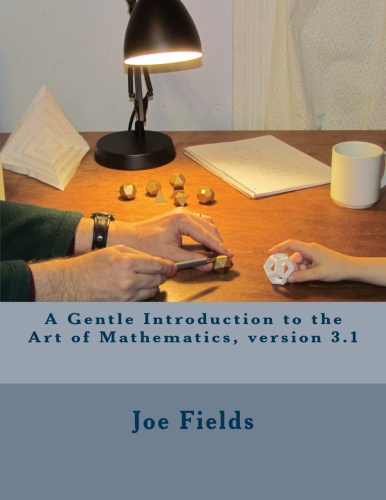
A Gentle Introduction to the Art of Mathematics
This open-source textbook covers several topics in the foundations of mathematics (logic, sets, relations, functions and cardinality) and introduces the reader to many techniques of mathematical proof.
Tag(s): Mathematics
Publication date: 31 Dec 2010
ISBN-10: n/a
ISBN-13: n/a
Paperback: 438 pages
Views: 28,039
Type: N/A
Publisher: n/a
License: GNU Free Documentation License Version 1.3
Post time: 14 Dec 2010 06:54:50
A Gentle Introduction to the Art of Mathematics
 This open-source textbook covers several topics in the foundations of mathematics (logic, sets, relations, functions and cardinality) and introduces the reader to many techniques of mathematical proof.
This open-source textbook covers several topics in the foundations of mathematics (logic, sets, relations, functions and cardinality) and introduces the reader to many techniques of mathematical proof.
Publication date: 31 Dec 2010
ISBN-10: n/a
ISBN-13: n/a
Paperback: 438 pages
Views: 28,039
Document Type: N/A
Publisher: n/a
License: GNU Free Documentation License Version 1.3
Post time: 14 Dec 2010 06:54:50
Click here to read the full license.
Joseph Field wrote:A Gentle Introduction to the Art of Mathematics (GIAM for short) is a textbook for a "transitions" course. Transitions courses (also known as "foundations" or "intro to proofs" courses) are typically taken after the Calculus sequence and before upper-division coursework in the mathematics major. Their purpose is to acclimatize the student to some of the culture and terminology of mathematics and to begin developing in them a proficiency at reading and writing mathematical proofs. GIAM has chapters on Logic, Set theory, Relations and Cardinality interspersed with chapters on proofs -- direct and indirect arguments, induction, combinatorial reasoning and "magic". Also, there are amusing quotations at the start of every chapter.
Tweet
About The Author(s)
Joe Fields is a professor in the Mathematics Department at Southern Connecticut State University. He earned his doctorate at the University of Illinois, Chicago under the direction of Vera Pless. His thesis was in the area of Algebraic Coding Theory, an interest which he continues to pursue as lead developer and maintainer of the GAP package Guava, a computational tool for researchers in Coding Theory.

Joe Fields is a professor in the Mathematics Department at Southern Connecticut State University. He earned his doctorate at the University of Illinois, Chicago under the direction of Vera Pless. His thesis was in the area of Algebraic Coding Theory, an interest which he continues to pursue as lead developer and maintainer of the GAP package Guava, a computational tool for researchers in Coding Theory.